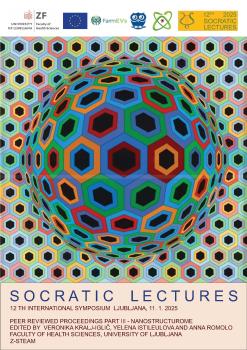Standardization of Procedures: The Nanostructurome Pipeline
Kratka vsebina
Large scale ecological features are driven by the interactions between organisms at all life scales, in particular the microorganisms living in the air, soil, and water. If we want to understand how an ecosystem will respond to natural and human-induced changes, we need to understand the state of the unseen majority – the microorganisms. Understanding of a system means characterising the function of its components and their interactions. In the presently acknowledged view, an ecosystem is considered as an organization of molecules (genes, mRNAs, proteins, and metabolites) into complex molecular pathways (such as gluconeogenesis and tricarboxylic acid cycle). It is thought that interacting molecules form functional modules (such as groups of molecules involved in the same biological process), which then drive larger scale biological processes. Supported by the omic-level high-throughput data acquisition and collections, comprehensive models of the interactions among biomolecules are sought. Since the discovery of DNA molecule as a powerful carrier of the information, solutions at the molecular level have been in focus so far. But for understanding of some essential cellular processes downscaling from micro to molecular level is too big to overcome in a single step. Apparently, the substance (and with it the information) is exchanged between cells within nano-sized extracellular particles (EPs) and as this level is at the core of interaction between the microorganisms, it could be the lever to shift the state of the ecosystem. By creating a pipeline of standardized complementary methods for characterization of samples containing EPs we are approaching the largely unknown landscape of a “nanostructurome” that will in the future become increasingly filled with knowledge on sub-micron cellular structures that convey matter and information between cells.
Prenosi
Pages
Izdano
Kategorije
Licenca

To delo je licencirano pod Creative Commons Priznanje avtorstva-Deljenje pod enakimi pogoji 4.0 mednarodno licenco.


